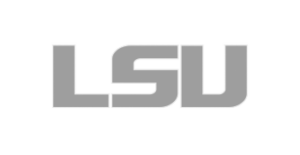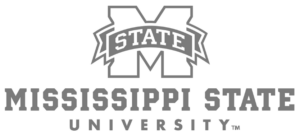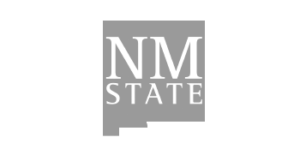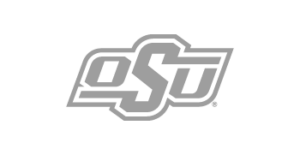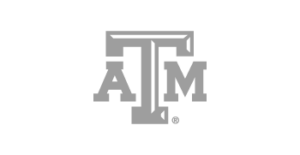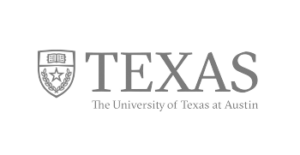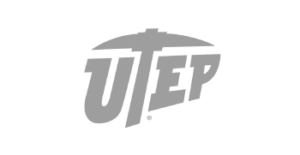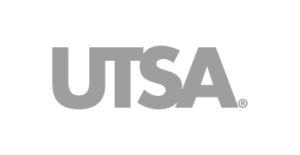These UT professors have won the university’s Invent & Innovate Awards
by Avril Seale
UT News
Feature image: From left, Christopher Idelson, John M. Uecker, M.D., Doug Stoakley and Christopher Rylander. Photo by Marsha Miller
A Laparoscopic Windshield Wiper
Health Innovation Award: ClearCam
Dell Seton Medical Center’s John Uecker performs about 350 laparoscopic surgeries a year and was frustrated by constantly having to stop surgery to clean the camera lens. Cleaning the lens meant breaking concentration; removing the camera from the patient’s body; cleaning the lens of blood, fat and condensation; and re-inserting the scope and finding his position to resume the surgery.
Believing there had to be a better way, in 2016, Uecker, an associate professor of surgery, approached Chris Rylander, an associate professor in UT’s departments of Biomedical Engineering and Mechanical Engineering.
Rylander recruited then-Ph.D. candidate Chris Idelson to co-invent a solution. Rylander and Idelson were intrigued by the shape of the Slurpee straw, and after more than a year of development, Uecker began testing their prototype.
In the fall of 2017, the creation was patented, and Doug Stoakley, an entrepreneurial adviser with the Innovation Center at UT’s Cockrell School of Engineering and a longtime technology executive, became interested in the project.
When it came time to form a company in 2018, Uecker became chairman and CEO of ClearCam. Stoakley became president and chief operating officer. Idelson, a newly minted Ph.D. at Dell Med, became vice president of engineering/research and development. And Rylander became ClearCam’s chief technical officer.
Related Story: “Slurpee Straw Inspires Surgery Innovation.”
______________________________________________________________________________
Defeating Cancer by Enhancing Immunity
Startup of the Year: Kyn Therapeutics
Tumors cause a number of structural and chemical changes in the surrounding cells and tissues, referred to as the “tumor micro-environment,” changes that promote tumor survival. George Georgiou, professor of chemical engineering and molecular biosciences, founded Kyn Therapeutics Inc. in 2016 to reverse these changes and allow immune cells to reach the tumor.
In 2019, Kyn Therapeutics, based in Boston, entered into a global strategic collaboration with Celgene to develop novel immuno-oncology therapies. Georgiou is co-inventor of more than 120 issued and pending U.S. patents licensed to 29 pharmaceutical and biotech companies. He has been named one of the top 100 chemical engineers of the modern era by the American Institute of Chemical Engineers, and in 2013 he was selected as one of the top 20 translational researchers by Nature Biotechnology.
______________________________________________________________________________
Quiet, please!
Commercialization Success of the Year: TheAMLS and FastFRS Software Packages

The story of this year’s biggest commercialization success started in 1986, whenJeffrey Bennighof joined UT’s Department of Aerospace Engineering and Engineering Mechanics with a curiosity about how to predict vibration in complex structures. In the 1990s, Bennighof received funding from the Navy to develop a new method for analyzing vibration of submarines, but the end of the Cold War brought a decline in federal funding. At the same time, the auto industry became increasingly interested in making cars quieter.
Bennighof’s research group produced commercial software to analyze vibrations, and licensing revenue from industry supported ongoing research and improvement. In the 18 years since the software first became commercially available, it has become the standard in the industry for ensuring quality beginning at engineering design stages. This has resulted in widespread use of two software packages: AMLS and FastFRS. Revenue to UT during the past three years has exceeded $6.5 million.
______________________________________________________________________________
Sequencing … proteins?
Invention of the Year

Cancer, Alzheimer’s, heart failure, diabetes and many other disorders are associated with unique proteins that can act as biomarkers, giving away the presence of disease. Detecting these proteins will help researchers diagnose diseases earlier and even understand the causes. But the current laboratory standard for sequencing proteins, mass spectrometry, can detect a protein only if there are about a million copies of it. It also has a low “throughput,” because only a few experiments can be conducted at a time compared with the many thousands possible with techniques such as gene sequencing.
Next-generation gene sequencing has made analyzing the entire genome of any organism fast, accurate and affordable. More than six years ago, molecular biosciences professor Edward Marcotte began wondering whether DNA-sequencing-like technology could be used to study proteins. Because the method involves attaching chemical tags to the proteins being analyzed, Marcotte recruited UT professor Eric Anslyn, an organic chemist. The researchers used supercomputer clusters at UT’s Texas Advanced Computing Center.
With this new method, “single-molecule fluorosequencing,” researchers can sequence millions of protein molecules simultaneously in a single sample. Marcotte believes future refinements could boost the number into the billions and allow researchers to search cell by cell to understand how a tumor evolves from a small mass of identical cells to a soup of genetically divergent cells, each with its own strengths and weaknesses.
Along with Jagannath Swaminathan, Marcotte and Anslyn share a patent with UT Austin on the underlying technology. And with Talli Somekh, Angela Bardo and Zack Simpson, the team has founded Erisyon Inc. to commercialize the technology.
MEDIA CONTACT
University Communications
Email: UTMedia@utexas.edu
Phone: (512) 471-3151
